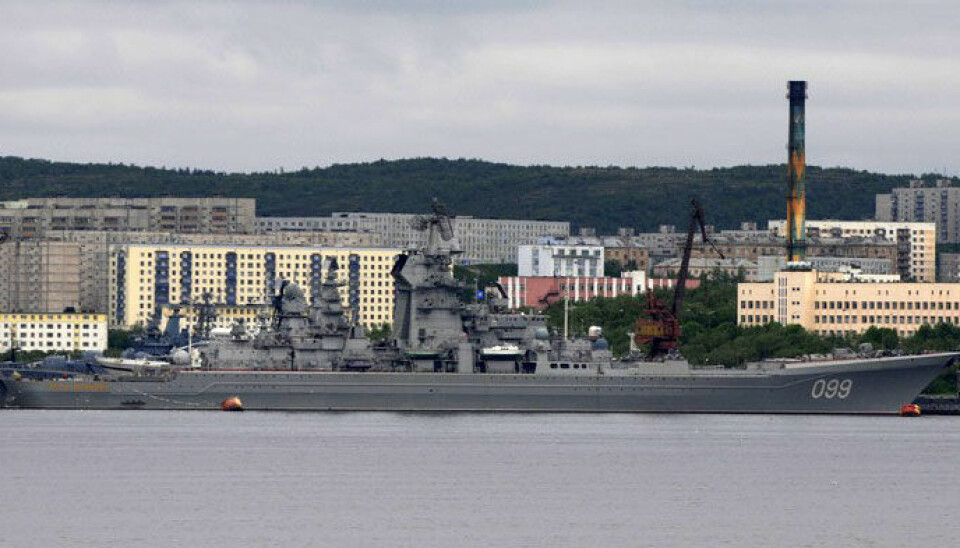Western sanctions hinder modernisation of Russia’s largest warship
Modernisation of the nuclear-powered battle cruiser Admiral Nakhimov is far behind schedule as Russia itself need to produce auxiliary systems.

Work has been going on since 2015 aimed at reactivating the giant warship. Original plans said it would be ready for voyages with the Northern Fleet in 2018. Progress, however, is slow and the one-plan-after-the-other for sea trials in White Sea have been postponed. In 2022, it was said relaunch should come in 2023, then followed by another announcement saying autumn 2024.
Sevmash, which is part of the state owned United Shipbuilding Corporation, for the most builds new nuclear-powered submarines of the 4th generation. Repairing the battle-cruiser, though, have repeatedly been highlighted by the Navy as a priority.
In August, Commander-in-Chief Admiral Aleksandr Moiseev confirmed that the Admiral Nakhimov was to begin trials in November.
That will not happen, Izvestia now reports.
Sources familiar with the situation speaking with the newspaper say the launch “has been postponed indefinitely.”
Google Earth, providing satellite images, has its latest Severodvinsk update from July 20, 2024. The image can’t tell what happens inside the hull, but from outside the 252 meters long ship looks messy.
The Admiral Nakhimov is not fit for leaving the berth.
Military expert Dmitry Boltenkov confirms the trouble.
Sevmash had to change all but the hull, he told Izvestia. “For this, of course, they needed a huge number of suppliers of combat systems and weapons. But now in our country we have to substitute what used to be imported,” Boltenkov said.
“Perhaps they planed to buy some auxiliary systems in the West, but now they need to build it themselves.”
The news contradicts Vladimir Putin’s narrative that Russia’s war machine is unharmed by Western sanctions.
Meanwhile, the battle-cruiser’s sister vessel, the Pyotr Velikiy, is moored at a pier in Severomorsk, the headquarters of Russia’s Northern Fleet.
The Pyotr Velikiy, which used to take a lead role in Barents Sea exercises, has not been sailing for a long time, allegedly as the crew has disembarked as part of a transfer to the Admiral Nakhimov.

Lack of a operative battle cruiser is not the only struggle for the Northern Fleet. The infamous aircraft carrier Admiral Kuznetsov, will neither sail out on sea trial this autumn as previously promised.
The Soviet-built carrier has been under upgrade since 2017, and is currently moored at shipyard No. 35 in Murmansk.
A local source in Murmansk has informed the Barents Observer that the vessel is still in “very bad shape” and “much work remain.”
Located in Kirkenes, Norway, just a few kilometres from the borders to Russia and Finland, the Barents Observer is dedicated to cross-border journalism in Scandinavia, Russia and the wider Arctic.
As a non-profit stock company that is fully owned by its reporters, its editorial decisions are free of regional, national or private-sector influence. It has been a partner to ABJ and its predecessors since 2016.